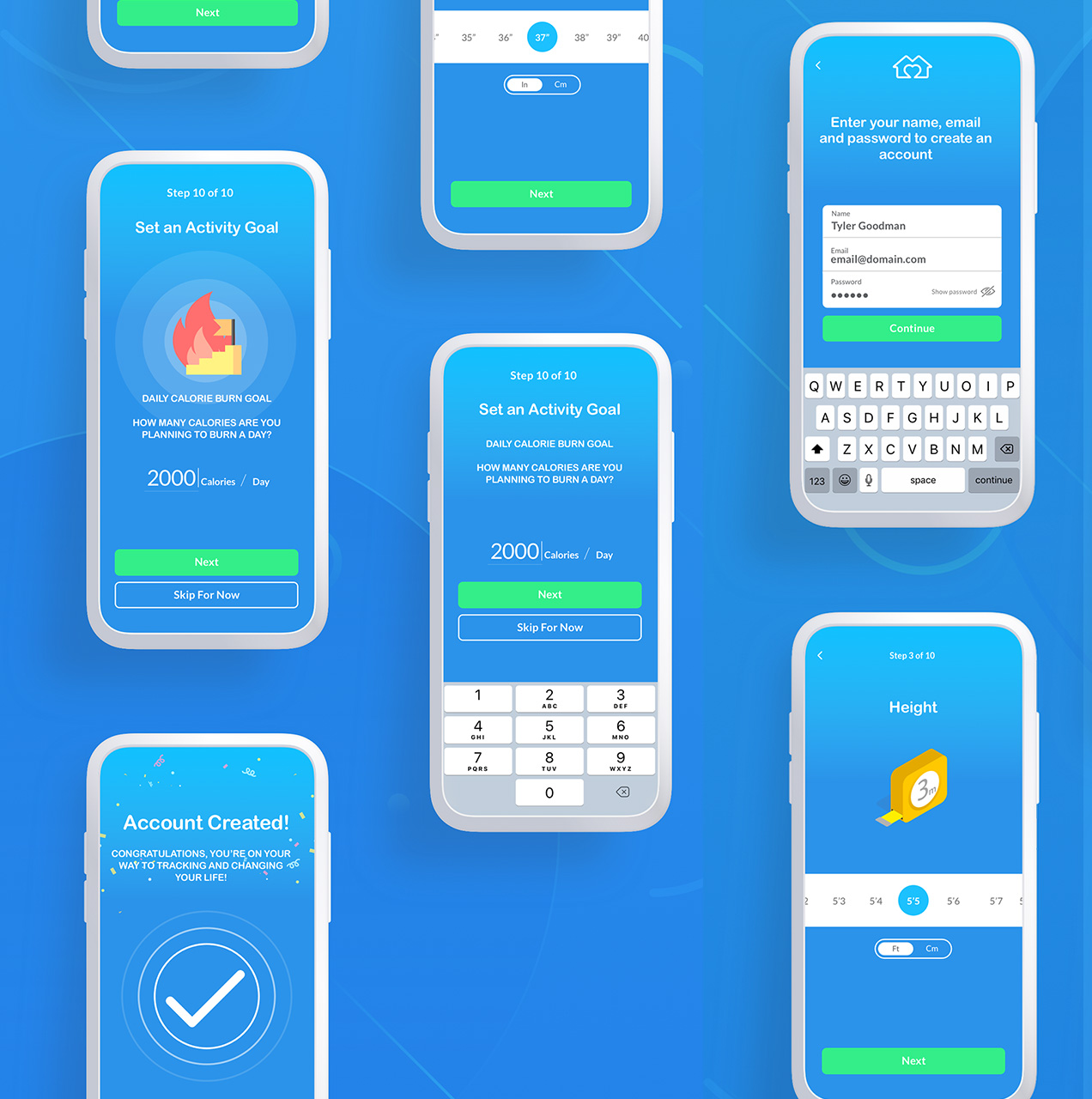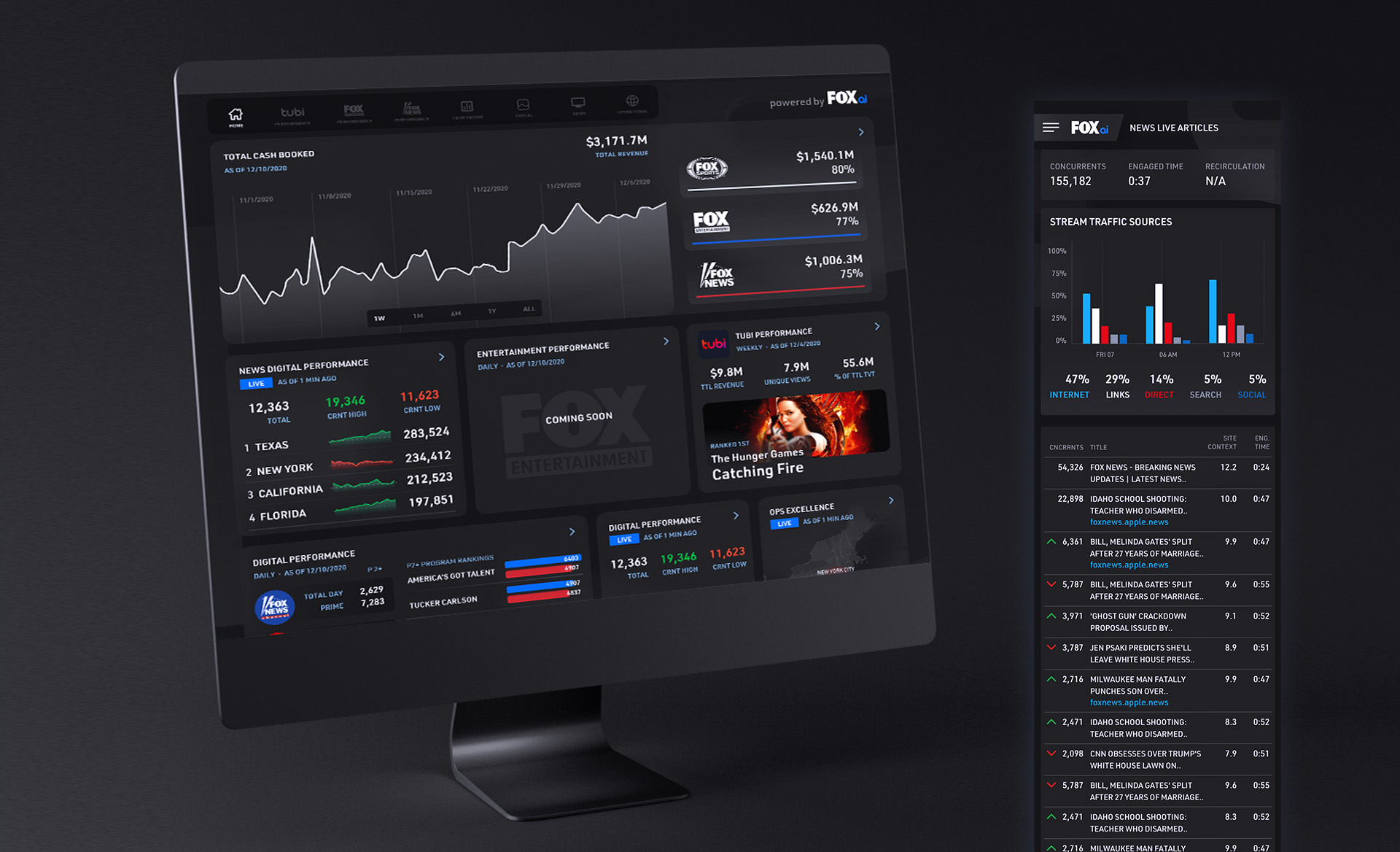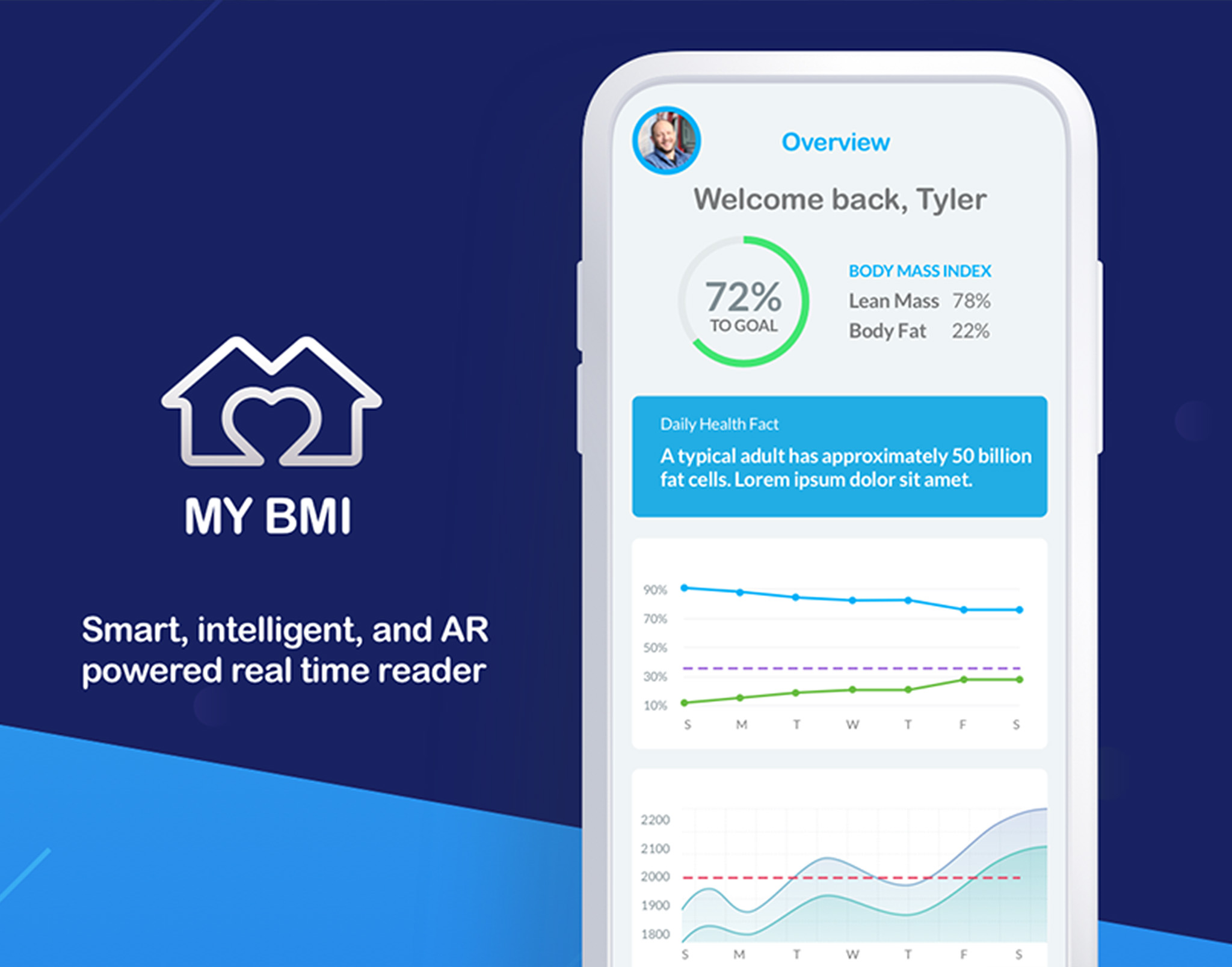
American Heart Association
My BMI
Scroll to learn more
Client
AHA
Market
United States
Main objective
Awareness
In the year 2019, we find ourselves in a paradoxical situation: an era of boundless information access coexists with a dire health crisis. Heart disease alone accounts for a staggering 1 in 4 deaths in the United States. Our mission was clear: to bridge the gap between technology and health, leveraging the power of digital tools to empower individuals.
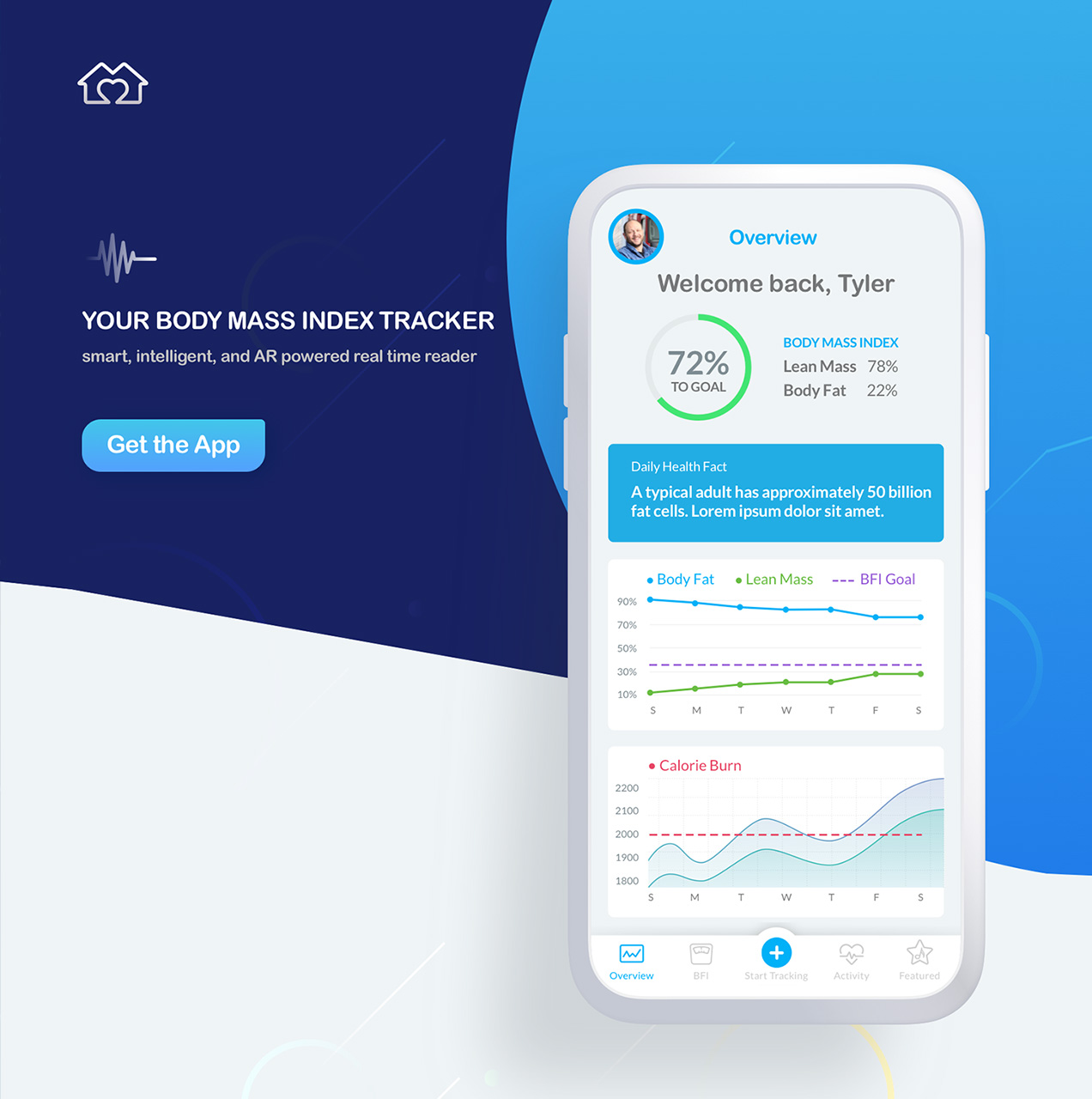
Unraveling Health Motivations
Our journey began with primary research, where we engaged in 1-on-1 user interviews. Participants, spanning ages 18 to 70, candidly shared their struggles and aspirations. Their voices resonated with common themes: overwhelm—as users grappled with an abundance of health-related possibilities, often forgetting to check their apps; inclusivity—as we discovered the need for different goals tailored to user levels—beginner, novice, and advanced; motivation—achieving goals and earning rewards fueled their health journey.
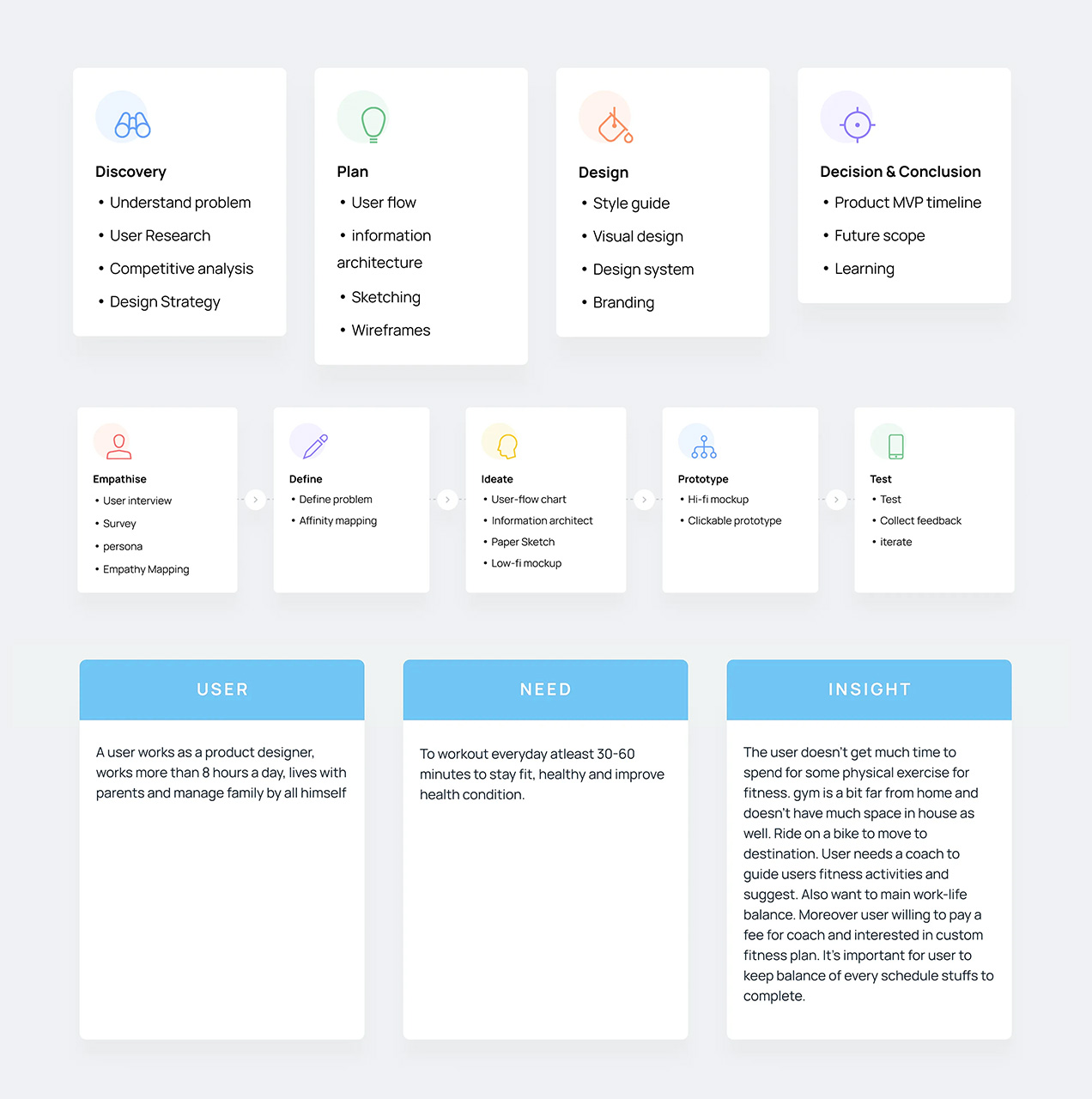
non-linear Approach
We moved with Design thinking which is a holistic and non-linear approach as we know. It’s a continuous and iterative process by which we can improve each step by finding out the needs of users. The design thinking approach helped me to understand users, define the problem, brainstorm the possible idea and later prototype the idea and test it with users to find out their pain points and solve it, launch it in the market & make it more useful to them.
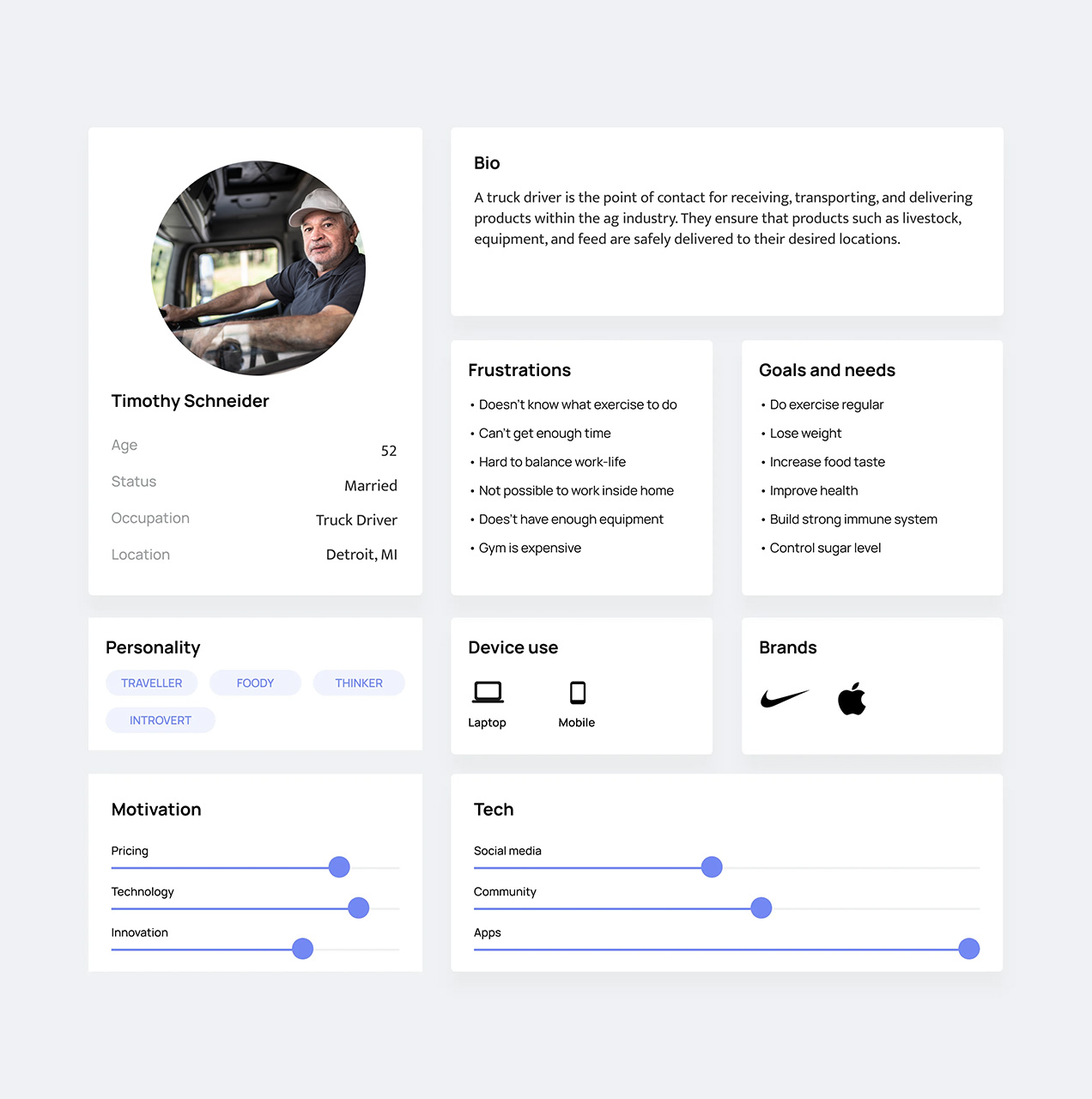
highlighting user's Goals, needs, frustrations
As a senior UX/UI role, Adding a Persona to portray a single user who stands for all to understand them better as one instead of using multiple persona. I synthesized insights from user research, personas, and empathy mapping to define the problem statement. The challenge is to create a friendly, usable, desirable, credible, and accessible digital experience for users interacting with the mobile app. Proposed solutions include personalized fitness features, robust tracking tools, community building, habit-forming challenges, and a points-based leaderboard.
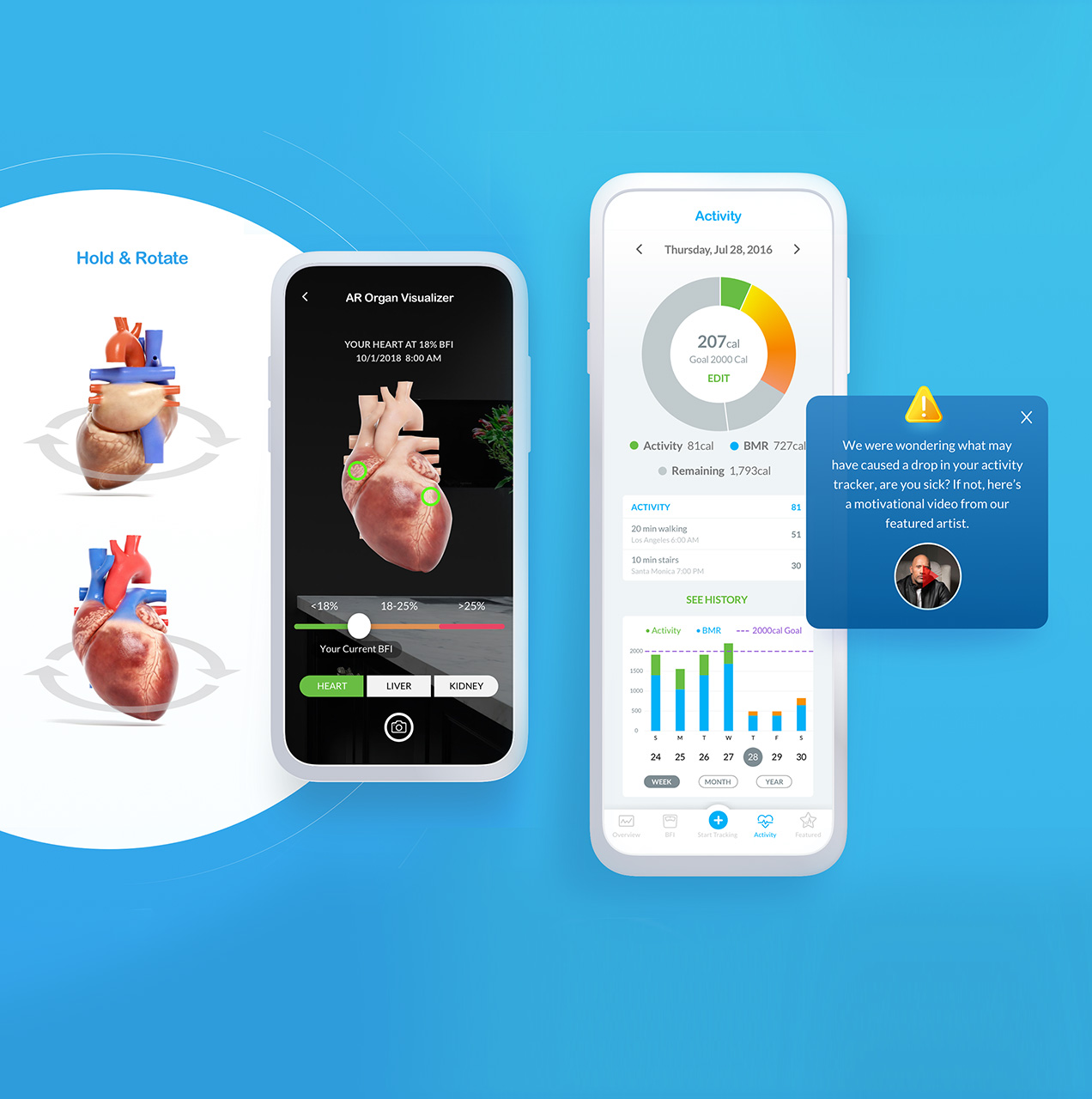
Augmented Experience
Armed with Augmented Reality, we embarked on crafting the My BMI app. Our design thinking mindset guided us: identify the problem space, define unresolved issues, ideate solutions, and prototype with a human-centered approach.
Designing the BMI Experience
Simplified Tracking streamlined data entry, ensuring users wouldn’t feel overwhelmed. The app’s interface allowed effortless input, minimizing friction. Personalized Goals were tailored for different user levels—whether a beginner aiming for consistency or an advanced user pushing boundaries. Rewards and Milestones celebrated achievements, unlocked badges, and fostered a sense of accomplishment. Mind-Body Integration went beyond BMI, incorporating mental well-being components, recognizing that health extends beyond physical metrics. And finally, the Community Hub provided solace, connecting users with others, allowing them to share experiences and foster a supportive network.

